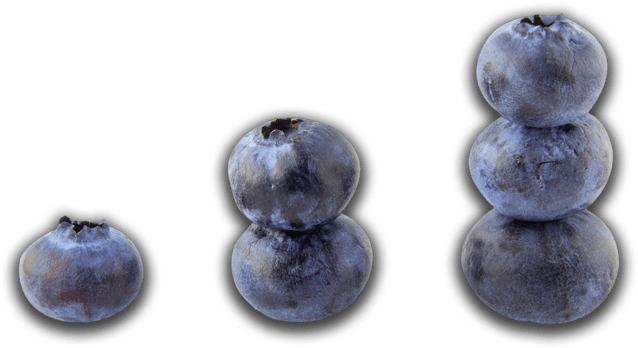A core part of every superior sales strategy is using a uniform, consistent, and compelling brand across the entire sales spectrum to positively influence buying decisions.
Step 1: Listen to your end client and your sales team

In our 11 years of experience working with various businesses, we consistently see a significant gap between how a business views their product/service, and the actual perception of the end client who experiences it. Many businesses claim that their sales and marketing departments inherently know the company’s merits, unique value propositions, competition, client relations, pricing strategy, etc. But this doesn’t translate to the end client’s reality about how they are experiencing the brand. This is a real issue.
That’s why we always get intimately familiar with your end client before we begin any sales recalibration. We want to understand them, what they think about you, and how they feel about your business. We need to know what they want and how they want to buy from you. We listen to them to develop a deep understanding of their pain points and how your product addresses them.
The Pain Pleasure Principle, developed by Freud, suggests people only make choices to decrease pain or increase pleasure. In a B2B setting, your company is hired to either a) reduce the cost-basis of your end client via your solution, or b) increase revenue for the end client. It’s that simple – they hire you to either reduce costs or drive revenue – each of which, when successfully achieved, INCREASES PROFITS- the main interest of the end client.
Your Sales Team also needs attention. They are your day-to-day face to existing and potential clients. Many businesses assume their sales team is unified, on the same page and consistently delivering their sales story. They believe their messaging is consistent and delivered in an optimal way to touch, move, and inspire engagement and buying decisions. Unfortunately, they’re typically not.
It’s not realistic to assume this is truly the case, it’s likely you are missing countless small nuances and actions across EVERY micro touchpoint, including call notes, follow ups, proposals and post purchase. A deep dive in the reality of your sales team is a must, as only by first thoroughly understanding DEMAND (the end customer’s perception), can you properly equip the your sales team with the correctly calibrated tools to succeed. This is a trait of excellent leadership – not just knowing how to motivate your sales team, but giving them the right tools. It’s a value chain from leadership at the top, down to your sales team who provide vital input on what’s working and what is not, so you can equip them to win. The end goal is for your business to cohesively interact with targets to successful Capture, Compel, and Close them.
Step 2: Build out new collateral + test + test + test
The B2B sales cycle is a complex one. This is why the need to correctly qualify a prospect, listen to their needs and present information that influences a buying decision is a must. The existing collateral your sales team is using may not be optimally calibrated to take in account the particular stage of the sales cycle, the exact audience and the appropriate communication strategy that will take the conversation closer to a sale.
All these strategic and business considerations must be then wrapped in an attractive brand identity. You’ll need a substantial visual impact, with as many illustrations, charts and graphics as possible. The world is becoming more visually driven, as people change the way they consume content. Your materials need to reflect this approach.
Making decisions based on tested assumptions is highly empowering. Building new sales assets in a closed chamber environment and only having the feedback of your sales professionals and C-suite is not sufficient, and potentially detrimental to sales growth. All assets must be tested on past and existing clients, and then on a limited selection of real life sales prospects using a technical, data science approach. Then you need to refine accordingly to your test group’s lean data to optimize sales results. And then test again on a new sample set to measure improved conversion results.
The “conversion” is often defined as multiple “soft conversions” during various stages of the sales cycle, until the final proposal is agreed upon and the sale is made.
Specifically, your new collateral potentially includes:
- A new sales presentation
- A new sales protocol
- A sales-touchpoint map with a communications guideline addendum for each phase of the sale
- Supporting collateral
- Sales-influencing unique value propositions
- A phone call outline for Socratic questioning/active listening/needs-fulfilment closing
- Various positioning collaterals like brand ads, a new website, calls-to-action, and a new brand video

All these assets are specifically calibrated to effectively Capture, Compel, and Close your target market(s).
Effectively testing these new assets in the field is paramount as to learn what’s working and what is not. What is not monitored is not measured. Having KPIs specifically set up to measure the efficacy of the new assets is essential to finalize them as “evidence-based” sales tools that have a high probability to increase sales.
Step 3: Launch new evidence-based tools and targeted campaigns
Once all new sales assets are fully tested with a representative sample set and recalibrated to reflect the “final” version for use across the entire sales force, we then have a truly evidence-based sales strategy. Our assumptions in creating each piece of new collateral was tested, refined and finalized to garner the best possible approach, given our core offering and the target audience’s perception and understanding of the value propositions .
On the macro level, there are two kinds of potential qualified leads: those currently in the sales funnel, and those who have yet not been approached and put into your sales funnel.
The new sales assets fit into a targeted campaign for both groups. Those already in the funnel will need to be classified as to which sales-touchpoint phase they are in, and then targeted with the new sales collateral for the remaining touchpoints to close the sale.
For new sales prospecting, we recommend launching a formal sales campaign. This campaign is truly a brand-sales one, meaning we leverage all the creativity, messaging and visual impact we can muster, and calibrate it to appeal to your target market(s) in a highly unique, differentiated and compelling way. To Capture the new sales leads requires a combination of excellent sales-campaign marketing collateral, an effective targeting/distribution strategy to attract your exact target client(s) type(s), and performance analytics to help us understand what’s working and what is not on a macro level.
Once the leads are captured, they must be qualified as to whether they are a.) a decision maker, b.) have a need for your product/service, c.) have appropriate budget to engage. If they pass all three, then they are classified as a qualified sales lead, and only 3 things need to happen for a Close:
- Understand their pain and offer your unique value propositions that directly solves it.
- Be packaged in a highly differentiated way, so they understand how you are better than other options (including the price/value perception ratio), and Compel them to engage.
- Influence a buying decision by working with their timing, initial limited scope engagement (small yeses), asking them what needs to happen to work together and then follow those requirements accordingly.

There are seven other techniques we can, if needed, discuss with you on a call to work toward a sales Close. Remember, each incremental step toward a close is a win, and every mini “yes” puts you closer to the big “YES,”, so be patient, diligent and POSITIVE. Having the proper mindset about the process is key.
Whatever happens, consistently will prevail. With that in mind, how do we ensure the sales team is consistently effective? We recommend a quarterly 360-sales management system for each sales person to ensure we are making the most out of the talent, skill, and the new tools we have in place.

